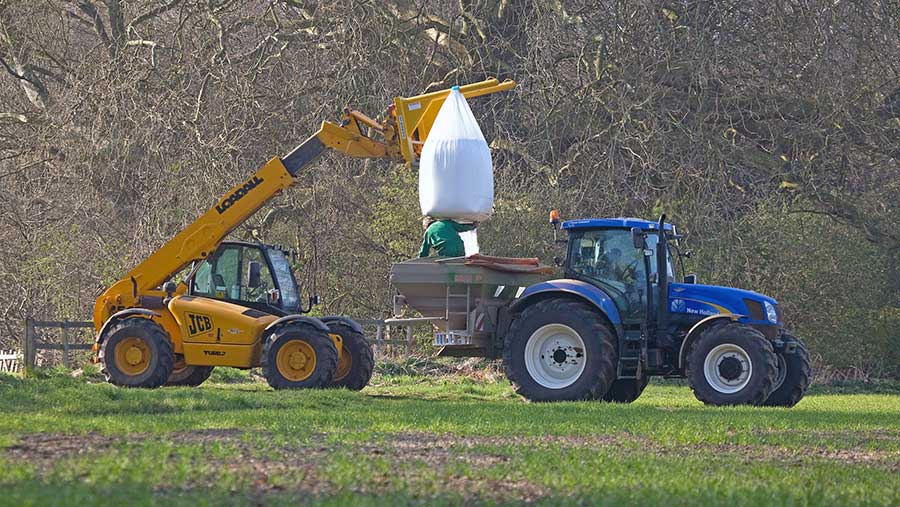5 reasons why spring fertiliser applications improve yields
 © Tim Scrivener
© Tim Scrivener Moving fertiliser applications from autumn to spring has been shown to improve cereal yields in some circumstances.
Mark Tucker, head of agronomy with Yara, offers five reasons why plants make better use of nutrients in the new year.
1. Fresh nutrients as soon as the crop starts growing
Early applications of a spring starter fertiliser containing nitrogen, phosphate, potash and sulphur (NPKS) will make nutrients available to the crop as soon as temperatures rise high enough for growth to start.
“This gives crops the best possible start to spring growth and can deliver a higher return on your investment,” says Mr Tucker.
See also: Trials show better yields with one spring fertiliser application
2. Increased yields of up to 1t/ha

© Tim Scrivener
Trials by Niab Tag have shown compound fertilisers applied in the spring can increase yields by 0.3t/ha on average in winter wheat and barley.
More recent trials by the Royal Agricultural University last year showed yield responses of up to 1t/ha in winter wheat.
| Crop | Yield response
(P&K in autumn/N&S in spring) |
Yield response (NPKS in spring) |
| Winter wheat | 8.6t/ha | 9.6t/ha |
| Winter barley | 7.4t/ha | 7.7t/ha |
3. Spring growth requires high levels of potassium

© Tim Scrivener
Periods of rapid growth require a rapid uptake of big amounts of several nutrients, particularly potassium. This nutrient is closely linked to future crop yield and also helps protect the crop against diseases.
Oilseed rape has a particularly strong demand for potassium, requiring in some circumstances up to 12kg/ha/day during strong periods of growth. This can result in a total requirement of up to 300kg by the end of flowering for a crop yielding 3t/ha.
4. Phosphate aids rooting development

© Tim Scrivener
Phosphate is a critical component to allow a growing plant to develop its root structure, thereby allowing it to extract other nutrients from the soil.
“Those [growers] who have taken a ‘P and K holiday’ need to be aware of potential yield penalties, with soil fertility eroding over time,” says Mr Tucker.
5. Plants require sulphur to use nitrogen

© Tim Scrivener
Soil and tissue analysis by Lancrop Laboratories shows sulphur levels in soils growing wheat and oilseed rape are nearly 100% depleted.
This is in spite of the fact that sulphur plays a vital role in the formation of plant proteins, amino acids and some vitamins and minerals.
“Together, nitrogen and sulphur are vital building blocks for protein, so [they] should be applied at the same time and in specific ratios, with spring being the ideal time,” explains Mr Tucker.
Another reason for applying sulphur with nitrogen is that plants can only take it up in small quantities at a time. This means applying it in small doses along with the nitrogen splits it so it is available for each period of rapid growth.
“A granulated nitrate plus sulphate product can give a return on investment of up to £10 for every £1 invested,” says Mr Tucker.

